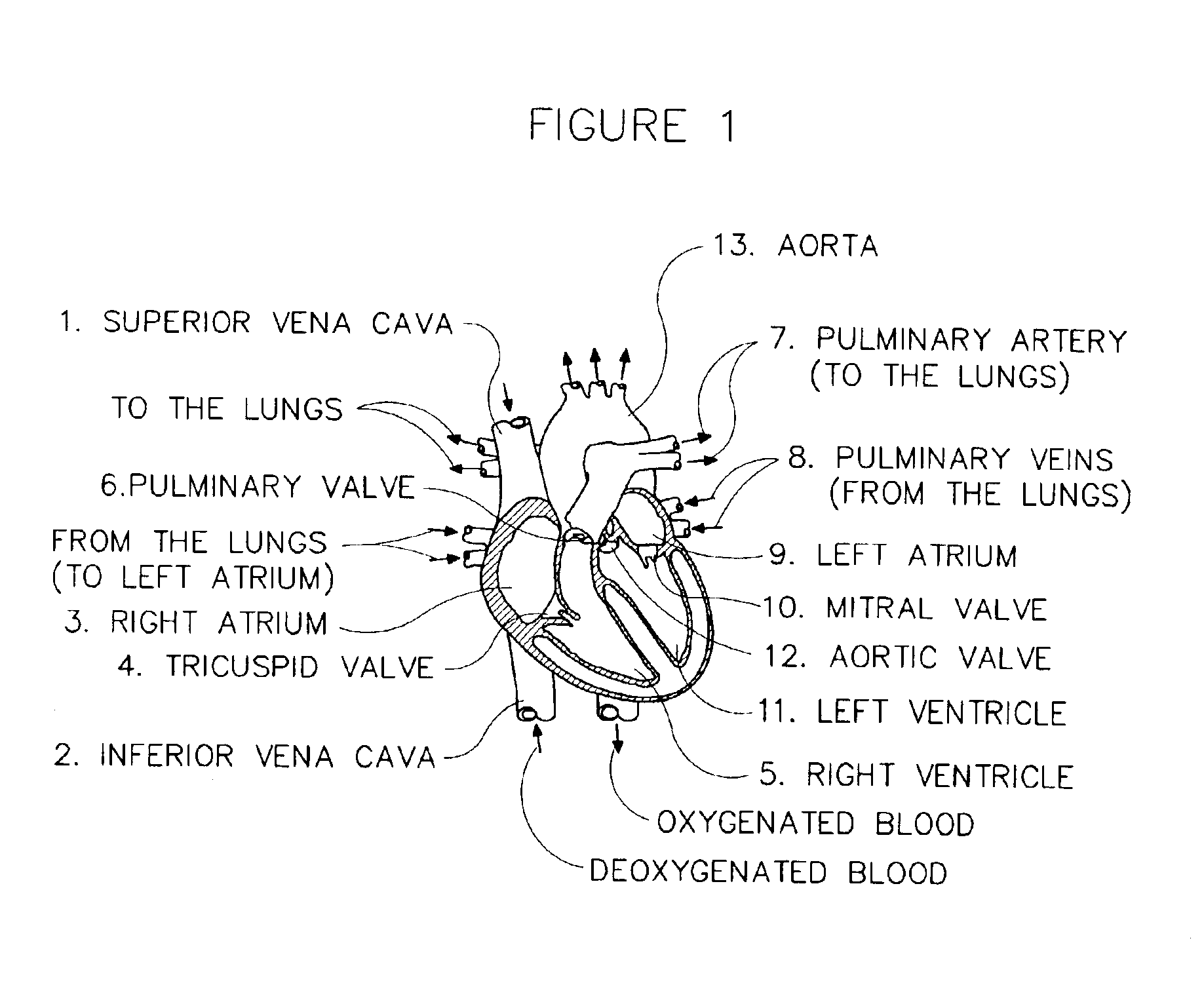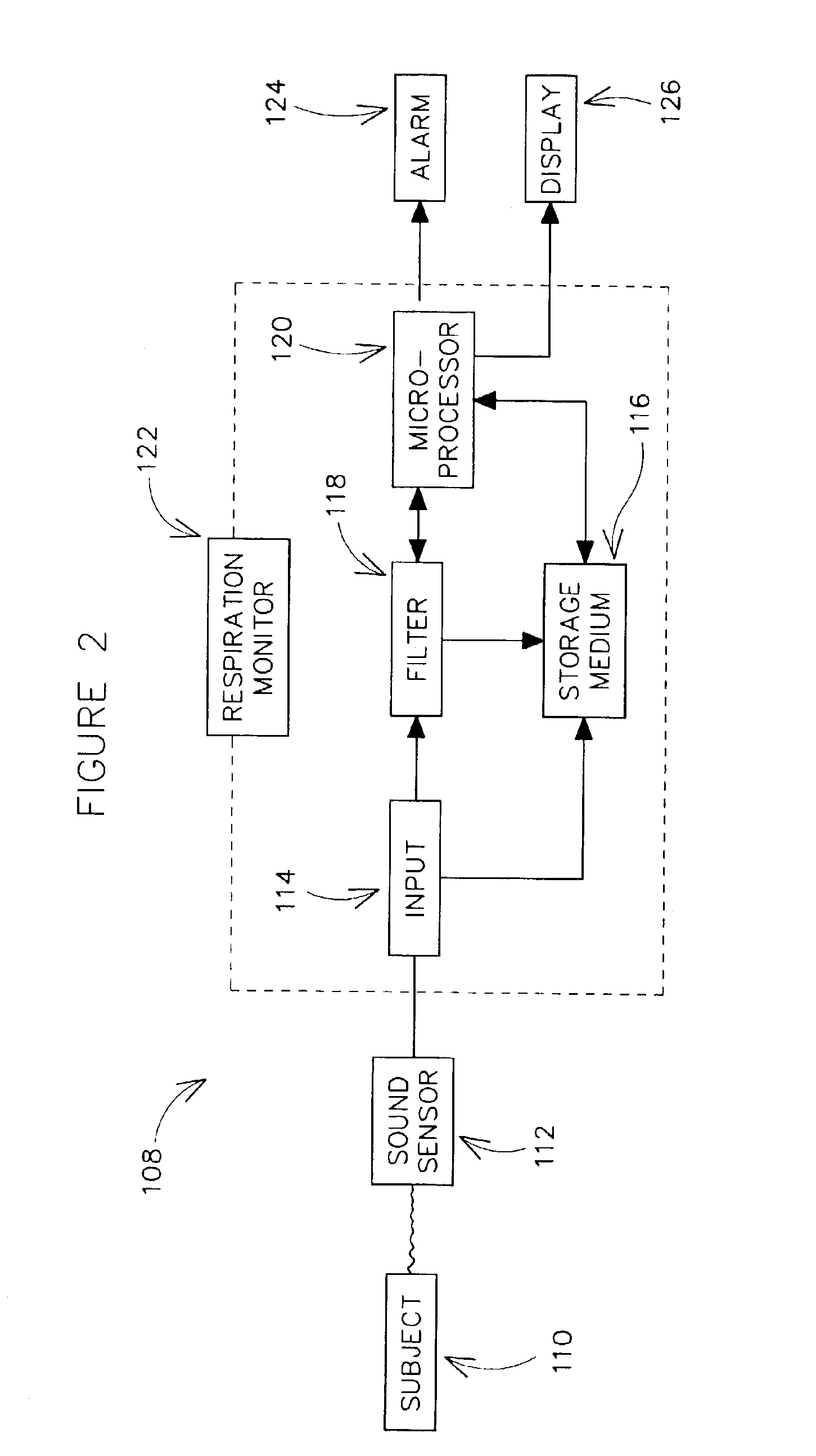Methods and systems for monitoring respiration
a technology of respiration and monitoring system, applied in the field of methods and systems for monitoring respiration, can solve the problems of preventing fully accurate measurements, affecting patient care, and affecting patient care,
- Summary
- Abstract
- Description
- Claims
- Application Information
AI Technical Summary
Benefits of technology
Problems solved by technology
Method used
Image
Examples
Embodiment Construction
[0026]It has been found that as a person inhales, the pulmonary valve and the aortic valve tend to close less synchronously, the aortic valve tending to close before the pulmonary valve. This causes the S2 sound to split into two individually identifiable sounds, which sounds still occur close in time to each other. The difference in time between the closing of the pulmonary and aortic valves can be referred to as the duration of the S2 split. As a person respires, a characteristic pattern can be seen in the duration of the S2 split. This pattern can be used to determine a subject's respiration rate, phase of respiration, and other respiration related information such as the presence of respiration related conditions.
[0027]Referring to FIG. 2, a monitoring system 108 includes an acoustic sensor 112 that obtains sounds from a subject 110. Acoustic sensor 112 is preferably a piezo sensor placed in a location that can be used to obtain heart sounds from a patient. A piezo sensor can be...
PUM
 Login to View More
Login to View More Abstract
Description
Claims
Application Information
 Login to View More
Login to View More - R&D
- Intellectual Property
- Life Sciences
- Materials
- Tech Scout
- Unparalleled Data Quality
- Higher Quality Content
- 60% Fewer Hallucinations
Browse by: Latest US Patents, China's latest patents, Technical Efficacy Thesaurus, Application Domain, Technology Topic, Popular Technical Reports.
© 2025 PatSnap. All rights reserved.Legal|Privacy policy|Modern Slavery Act Transparency Statement|Sitemap|About US| Contact US: help@patsnap.com



